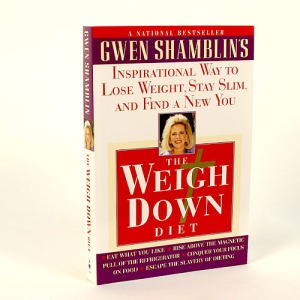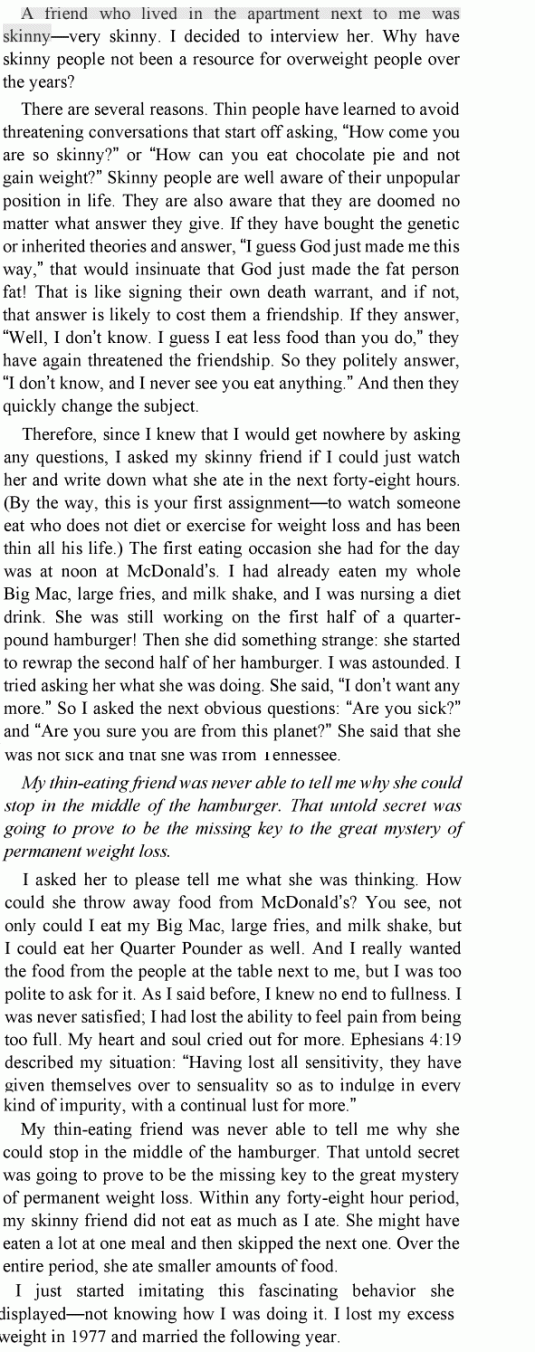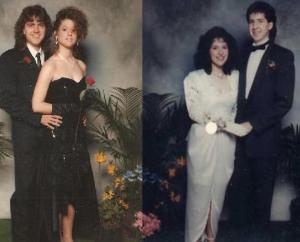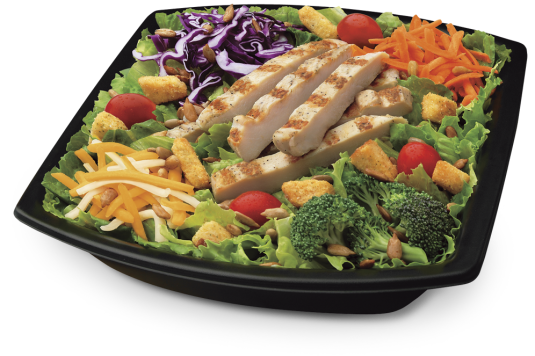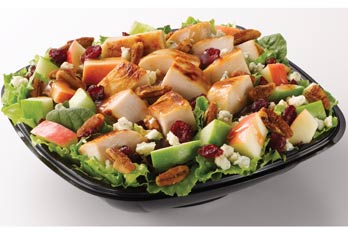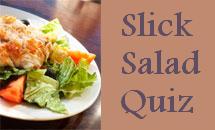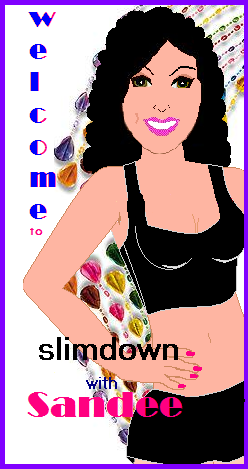 Several years ago a very kind friend loaned me a copy of Gwen Shamblin’s “The Weigh Down Diet” – a Biblical approach to weigh loss. Being a student and follower of Jesus, I was anxious to read it. I didn’t have a dramatic weight loss at the time but I did gain a few great concepts from Gwen’s experience that would later serve me well. One of those I would like to share with you now.
Several years ago a very kind friend loaned me a copy of Gwen Shamblin’s “The Weigh Down Diet” – a Biblical approach to weigh loss. Being a student and follower of Jesus, I was anxious to read it. I didn’t have a dramatic weight loss at the time but I did gain a few great concepts from Gwen’s experience that would later serve me well. One of those I would like to share with you now.
Gwen relays a story of observing a thin friend for “research purposes”. This is the excerpt from the book.
I began to think back on my own experiences with “thin” friends. My weight battle is not a new one. I lost 70 lbs as a young teen. This weight loss began as a result of “pretending” and I kept that weight off until the battle with thyroid cancer in my 20’s.
I attended a summer camp where most of my roommates wer very thin. Some of these girls had modeling backgrounds, others were athletes, such as gymnasts and dancers. I was, by far, the heaviest in the group. I didn’t want these girls to think that I was heavy because I over ate, so I ate like a skinny person for those two weeks. I would eat a bowl of Cheerios with skim milk for breakfast. For lunch I would eat a main dish only, like a hamburger with no condiments or stir-fried meat with veggies and no bread or dessert. It was extremely hot that summer – 104 degrees average temp during that two-week period so by dinner time, after having walked all over campus and having done calisthenics, I had no appetite. I would usually have only a beverage or a beverage and fruit for dinner. I was not setting out to lose weight, but I was active and eating like I thought these skinny girls would think I should. By the end of the two weeks this overweight teen had lost enough weight that her shorts wouldn’t stay up without a belt. After the two weeks I found that I like the feeling of being thinner and the attention I received from loosing weight. The attention and sense of accomplishment filled the same “void” the food had previously filled. I wanted to be thin. I wanted to prove that I had control over the food and my body. In a few months time I went from a size 14 to a size 7 by “pretending to be thin”. I simply ate very few calories and moved A LOT.
As time went on I maintained a low weight, but I worked for it. I would eat 1000 calories a day or less and exercise in obscene amounts. One weekend while spending the night with my best friend, a naturally thin size 3 track star, I began to realize how different her habits were from mine. I measured my foods and ate at planned times. I moved by design. Not her.
After dinner, over the course of the evening, I watched her go to the fridge several times. Each time I refused sustenance. Once she pulled out a jar of spaghetti. She ate a few bites and feeling satisfied returned it to the fridge. Hours later she made a sandwich, ate about half and threw the other half away. In a few more hours she whipped a bowl of whipping cream, ate a few spoons full and washed the rest down the sink. She talked of running. She ran for fun or when stressed or when she wanted to find alone time. Her activity was motivated by the activity itself, not the weight.
Now as a middle-aged woman I look back on these examples and I think how much I have to gain from emulating the examples of the thin people I know. I have a weight issue and need to be aware of it, but these naturally think folks have some real tricks up their sleeves without even knowing it. They eat when they are hungry or craving food and believe it is ok to eat only what they want. They don’t fear “wasting” and apparently aren’t members of the “clean your plate club”. They are in tune enough with their bodies to recognize satisfaction from a taste or from having “enough”. They understand “enough” instead of believing they are thru only when they simply can’t hold anymore. They often eat slowly, enjoying each bite. They experience their food as opposed to inhaling their food. They may sometimes eat foods that aren’t good for them, but these are often in small amounts.
If you aren’t in a skinny frame of mind yet, it’s ok. Just pretend. This week you are an actor or actress studying for a very important role. You are getting ready to portray “thin, healthy person”. Try to imagine how “Ideal You” at your ideal weight would eat and impersonate her. Try eating healthy whole foods. Enjoy lots of veggies and whole grains. Add lean meats and low-fat dairy. Enjoy dessert of fresh fruit. Indulge occasionally, but only enough to be satisfied. It’s ok to pretend. You might just be amazed how far it will take you.
Take Gwyn’s suggestion. Spend some time this week watching a naturally thin friend’s behaviors. Learn how people who are thin fill themselves physically. Then imitate those behaviors.
I encourage you to read “The Weigh Down Diet” and learn more about the “missing key” Gwyn references above. In truth overeating is often the result of trying to fill an emptiness that is often misinterpreted as hunger, but lies much deeper. We each have an empty space in our hearts that only God can fill for us. Allowing him to fill it instead of trying to stuff it full of other things is the key to permanent weight loss for many of us. If you feel an emptiness that you aren’t sure how to fill, I encourage you to pursue Him. Read “The Weigh Down Diet” to really understand how God can change us from the inside out.

